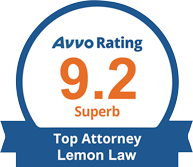The Shocking Truth About How Car Dealers Make Their Profit (Part Two): Dealer Holdbacks, Dealer Cash, Trade-Ins
Consumers are conditioned to look at the posted invoice price (or MSRP) of a car and assume that’s what the dealer paid for it, or that is fair and true price. Wrong. Manufacturer money, hidden money, is a game changer:
No. 1, the Dealer holdback: This is money the manufacturer pays to the dealer only after a car is sold. It’s typically 2 or 3 percent of either the invoice or the sticker price of the car. On a $20,000 car, a holdback represents $400 to $600. The holdback allows dealers to sell a car at invoice price (or even below invoice) and still make money. Most manufacturers offer holdbacks to their brands’ dealers, but not all. You can check for this holdback through Consumer Reports magazine’s pricing service — well worth it. The dealers won’t tell you and will hardly acknowledge it in negotiations, at least until you have competitive bids from other dealers.
No.2, Dealer cash: When a car isn’t selling well, the manufacturer will sometimes offer an incentive — often as much as $2,000 — to move it off lots. That’s known as dealer cash.
Dealer cash can also come into play at the end of a model year, when both the dealership and manufacturer want to clear out even popular cars to make way for the incoming new vehicles. Edmunds and Consumer Reports track this pass through money.
What’s another profit center? Used Car Sales and Trade-ins.
No. 3,Used Cars: Trade-Ins and Purchases: Although used cars account for the smallest percent of a dealership’s gross profits, the trade-ins themselves can be a huge profit center for the dealer. And dealers really need those used cars. According to NADA, 61 percent of a dealer’s used car inventory comes from trade-ins. Used cars are far more profitable for a dealer than are new cars. For example, there’s a $4,000 difference between the trade-in value of a 2010 Toyota Camry XLE (what the dealer would pay you for it) and its dealer retail price (what the dealer would sell it for). That $4,000 is essentially the dealer’s expected profit. Dealers will point out that they have to recondition used cars, and that costs money. But even so, the profit margin on a used car is typically more than what a new car sale can bring. NADA reports that at the average car dealership in 2012, net profit per new vehicle retailed was only $111.
On the buying side, used cars can be tricky for shoppers because they can be a blind negotiation, as buyers know little to nothing of value. Only by researching the current market and comparing prices can you know the right price for a used car.
Check Kelley Blue Book online for solid price and value information, whether you are buying used or trading-in. You will save a lot of money and negotiate with power.







